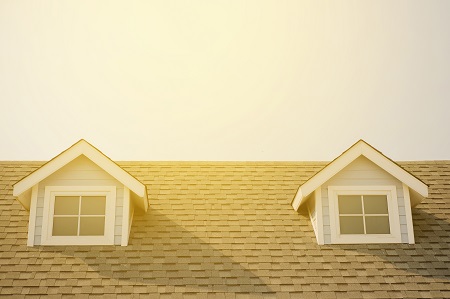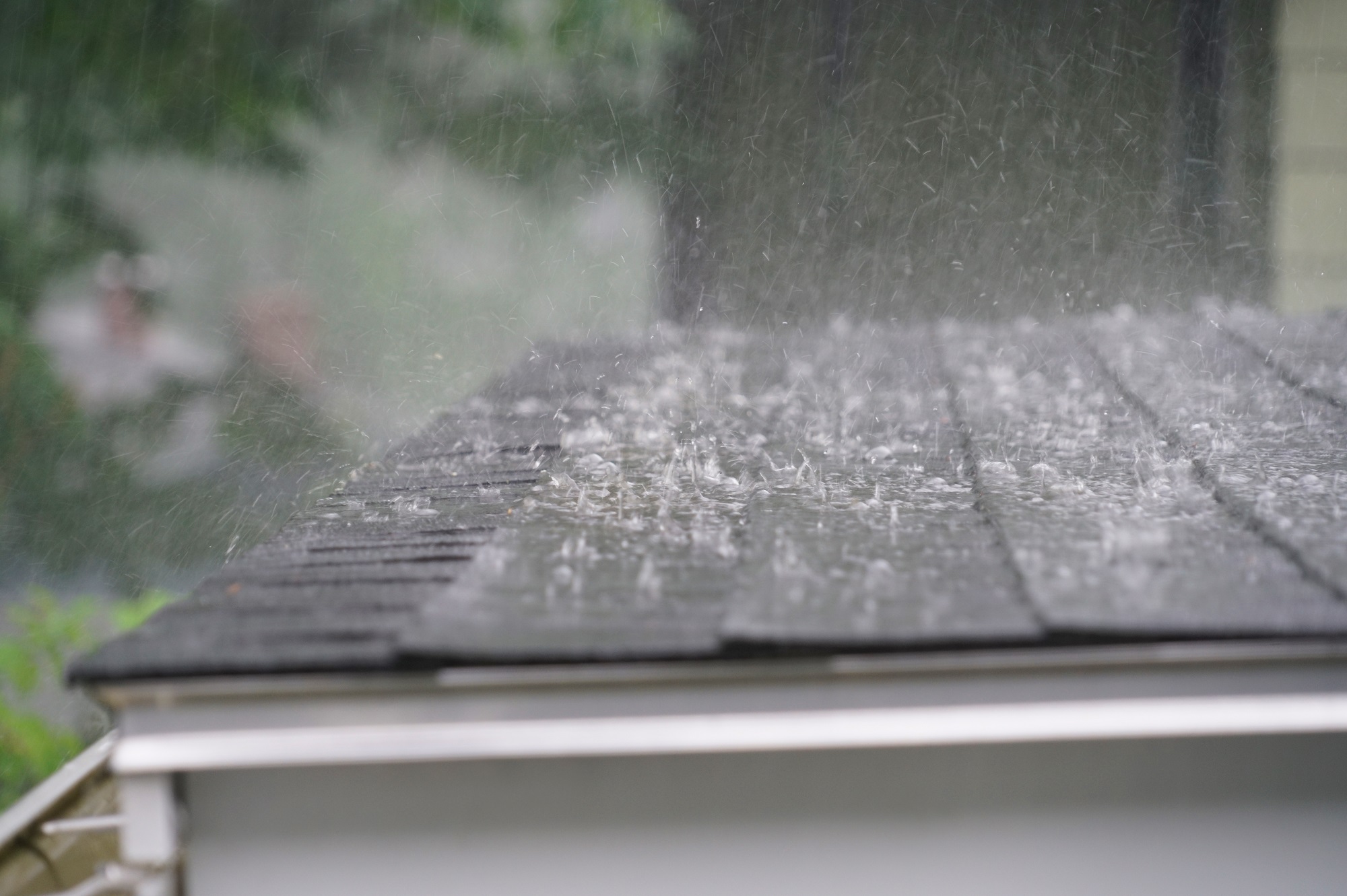Your roof is constantly exposed to the sun’s scorching heat, the pounding of rain, the weight of snow, the force of wind, and the onslaught of hail.
Yet, most people don’t think about their roofs until a problem makes itself glaringly obvious. You might wonder about the toll this constant weather exposure takes on your roof’s longevity, how to spot signs of weather-related damage, and when it’s time for a roof replacement.
The Impact of Sun Exposure on Roofs

When you consider the impact of weather on roof replacement, it’s crucial to understand how prolonged sun exposure can degrade your roof’s material over time, leading to potential damage and the need for replacement.
The sun’s UV rays can cause the oils in roofing materials to dry out, leading to brittleness, warping, or cracking. These effects can be accelerated in areas with high temperatures and intense sunlight. Over time, the damage can become significant enough to warrant a full roof replacement.
Additionally, the sun can cause color fading, reducing the aesthetic appeal of your property. Therefore, it’s vital to choose roofing materials that are UV-resistant and to ensure regular maintenance checks to mitigate the effects of sun exposure.
Rainfall and Roof Degradation
Just as the sun can cause significant damage, rainfall can also contribute to the degradation of your roof, underscoring the importance of considering weather conditions in roof maintenance and replacement.
Continuous exposure to rain can lead to a host of problems:
- Moisture accumulation: Prolonged dampness can weaken the roof structure and lead to mold growth.
- Leakage: Heavy rainfall can find its way through tiny cracks, causing leaks.
- Erosion: Rain can wash away the protective granules on shingles, reducing their lifespan.
- Ice damage: In freezing conditions, water can seep into cracks, freeze and expand, causing further damage.
- Rust: Metal components of the roof can rust due to continued exposure to moisture.
Your roof’s durability depends largely on its resilience against these rainfall-induced issues.
Effects of Snow and Ice
Snow and ice present a unique set of challenges for your roof, exacerbating wear and tear during the winter months. The weight of accumulated snow can strain your roof’s structure, leading to potential cave-ins.
Ice, on the other hand, can cause ice dams. These form when melting snow refreezes at the roof’s edge, preventing proper drainage. This can lead to water seeping under the roof, damaging the roof and possibly causing leaks inside your home or business.
Additionally, the freeze-thaw cycle can result in shingle expansion and contraction, weakening them over time. Therefore, it’s crucial to clear off snow promptly and ensure proper attic insulation to prevent ice dams.
Regular inspections, especially before winter, can also help identify potential issues early.
Wind Damage on Roof Structures
While winter weather elements like snow and ice can wreak havoc on your roof, it’s important not to overlook the damage that can be inflicted by high winds. Wind damage can manifest in various ways on your roof structure. Its effects are often not as apparent immediately, yet they can be severely destructive over time.
Consider these typical forms of wind damage:
- Lifted Shingles: Wind can get under loose areas, causing them to curl up or even break off.
- Creased Shingles: High-speed winds can bend shingles, forming creases.
- Loosened Nails: Winds can loosen nails, creating weak points.
- Debris Damage: Blown debris can lead to scratches or punctures in your roofing material.
- Gutter Damage: Winds can dislodge gutters, impacting drainage.
Understanding these potential risks can help you maintain your roof’s integrity.
Hailstorms and Roof Resilience
Hailstorms, another potent weather factor, significantly test the resilience of your roofing system. These ice balls, varying in sizes, can cause extensive damage to your roof’s surface. Even small hailstones, when driven by strong winds, can crack, dent, or remove the protective granules of your shingles, exposing the underlying material to the elements.
Larger hailstones can inflict more severe damage, including puncturing the roof or breaking the shingles, which can lead to a leaky roof, mold growth, and structural issues. The type of shingles you’ve installed also affects your roof’s resistance to hailstorms. For instance, metal roofs are more resilient against hail damage compared to asphalt shingle roofs.
Regular inspection and maintenance are crucial, especially after a hailstorm, to assess the damage and plan the necessary repairs or replacements.
Indicators of Weather-Related Roof Damage
Recognizing the signs of weather-related roof damage is critical in mitigating the effects and planning for necessary repairs or replacements. You’ll want to stay alert for the following indicators:
- Missing or torn shingles: Strong winds and heavy rain can loosen or tear shingles away.
- Dented or bruised shingles: Hail storms can cause noticeable dents or bruises on the shingles.
- Leaks or water stains inside your home or business: These typically suggest that your roof has been compromised.
- Damaged flashing around vents and chimneys: Flashing is designed to divert water, but harsh weather can damage it.
- Roof deck sagging: This may indicate prolonged water damage, poor material quality, or improper installation.
Each sign requires a unique solution, but they all necessitate immediate attention to prevent further damage and expense.
Time for a Roof Replacement: Signs and Steps
When your roof exhibits multiple signs of damage, it’s a clear-cut indicator that you might be due for a roof replacement—a process that involves careful planning and several vital steps.
Look for signs like damaged roof shingles, leaks, or water stains on your ceiling. If your roof is over 20 years old, that’s another red flag.
The first step in replacing your current roof is to hire a reliable roofing contractor. They’ll evaluate the damage and provide a comprehensive plan for repair. It’s crucial to discuss your budget, timeline, and material preferences to ensure you’re on the same page.
Mid Atlantic Roofing Systems Offers Full Roof Replacement Services
As a homeowner or business owner in North Carolina, you can turn to Mid Atlantic Roofing Systems for comprehensive and professional roof replacement services, ensuring your property remains protected despite age or weather-induced roof deterioration.
Mid Atlantic Roofing Systems offers:
- Expert knowledge to spot and diagnose roofing issues
- Timely and professional roof replacements for both residential and commercial properties
- High-quality customer service throughout the entire roofing project
- Free estimates on your residential or commercial roof replacement needs
- Complete roof inspection and repair services
In terms of weather impact, our expertise allows for accurate assessments of weather-induced damage, ensuring the longevity of your roof. In other words, you can trust Mid Atlantic Roofing Systems to safeguard your property.
Contact us today for a skilled team of roofing experts. We provide quality workmanship and exceptional customer service.
Types of effective roofing services we provide:
- Residential and Commercial Roofing Services
- Roof Repairs
- Roof Installation Services
- Gutter Installations
- Flat Roofing
- Siding Installation
- Window Replacement
- Chimney Caps
- And More
Visit our About Us page for more information about our experienced roofing company.

